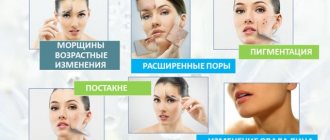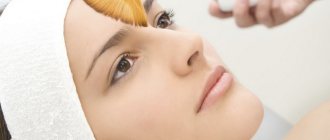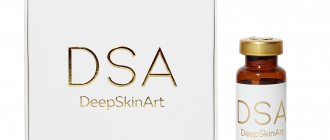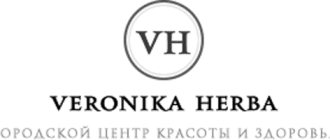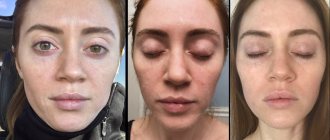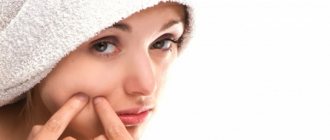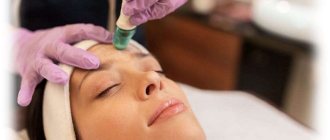From this article you will learn:
- Why peeling in summer can harm your skin
- Who is peeling recommended for in summer?
- What are the contraindications for peeling procedures in summer?
- What types of home and professional hardware peeling can be done in the summer?
- How to care for your skin after peeling in summer
Velvet and silky skin is the dream of every woman. Representatives of the fair sex often use a common cosmetic procedure - peeling. It renews the skin, the body begins to breathe, the dermis is transformed. After the manipulation, you can get an even complexion, lightening of age spots, cleansing and narrowing of pores. To avoid losing the effect, repeat cleaning regularly. Is it possible to do peeling in the summer and what the consequences of this procedure may be, you will find out in this article.
What can be dangerous about peeling in summer?
Peeling is a cosmetic procedure that helps remove dead dead skin cells with accumulated dust particles and bacteria.
Effect after manipulation:
- acne prevention;
- cleansing all layers of skin;
- lifting;
- skin smoothing and scar treatment;
- improving the permeability of caring components of cosmetics.
There is another side to the coin: skin regeneration does not occur instantly; the delicate top layer can easily dry out. If you sunbathe after the procedure, know that the tan will be patchy and you will have to work hard to even it out.
Many women ask the question: “Can I peel in the summer if I don’t sunbathe?” However, on the eve of the velvet season, one should not forget about photoaging - changes in the condition of the skin under the influence of sunlight. The middle and deep layers of the skin are sensitive to ultraviolet radiation. By removing the top layer, you leave them unprotected.
The weather is warm outside and you can't wait to sunbathe? You'll have to wait to visit the salon. Avoid deep peels, beauty injections and laser treatments in favor of youth. Popular renewal products contain components that can enhance the effects of the sun on the skin. If you live in the south, where summer extends far beyond its calendar period, this means that the dermis will have to be protected longer.
Is it possible to do peelings in the summer? This question is often asked by women with oily or problematic skin. The sun activates the sebaceous glands, and the procedure can alleviate the condition of the dermis. Some people use peeling to lighten scars and blemishes that cover the skin unsightly. However, the fight against them is long and does not always bring success. If you decide to do summer peeling, adhere to the following rules:
- Remove only the old stratum corneum without damaging the dermis.
- After the procedure, use sunscreen.
- Buy a hat with a wide brim. Thanks to it, you will not be exposed to direct sunlight, and an elegant accessory will make your look truly summer.
Hyperpigmentation may not occur naturally, but can be a complication after peelings, which occurs quite often. But this result cannot be compared with the consequences of photoaging, or helioderma. Most people living in Israel and California have dark, pigmented skin. The reason for this is the active sun, so they do not think about complications and do not wonder whether peeling can be done in summer and spring.
Modern cosmetology is an evolving system that annually offers new technologies and procedures that help women look more attractive. Over time, “horror stories” about the dangers of summer peelings cease to be relevant. The compositions of the products are becoming more gentle and are recommended for regular comprehensive care. Summer peeling gently cleanses pores, enriching the skin with oxygen and removing toxins. The procedure is included in comprehensive care. The tan lies evenly on the smooth, renewed dermis and looks attractive.
Therefore, in the summer you need to do gentle peelings that are gentle on the skin. Their task will be to cleanse and reduce sensitivity to ultraviolet rays.
Cosmetologists recommend resorting to peelings if:
- acne-prone skin;
- tissues are subject to rapid scarring and fresh marks need to be treated;
- the dermis is peeling or has become flabby;
- complexion is gray and uneven.
If your skin is fair, you do not tan, but turn red, and are forced to constantly use sunscreen, this is not a reason to refuse peeling in the summer. Tell your cosmetologist about the characteristics of your dermis, and he will select a special composition for you.
Peeling in summer is prohibited in the following cases:
- you are allergic to medications or have sensitive skin;
- you are sick;
- hormonal imbalance;
- you are pregnant or breastfeeding (in such cases, the skin reaction cannot be predicted).
Take these contraindications into account and remember that the effectiveness of the procedure and the speed of skin restoration depend on the general condition of the body.
If you are a fan of a tanned body, sunbathe before the cosmetologist's office, then wait 8-10 days and go for a cleanse. The procedure will take place without complications, will be useful and will cause only positive emotions.
If you have made a conscious decision to exfoliate in the summer, remember: your doctor has the final say. You should not be offended or angry if the manipulation is refused, because the specialist knows better than you whether you should conduct a session now or whether it is wiser to wait for the right moment. Don't risk your skin.
Read material on the topic: Salicylic peeling: healing, rejuvenating, cleansing
Peeling and solarium
It is incorrect to say that “artificial” sun is safer for our skin than natural sun. Yes, solarium ultraviolet radiation consists mainly of soft alpha rays, radioactive beta rays in tanning facilities are strictly regulated, and gamma rays are completely absent. But excessive use of solariums also provokes photoaging of the facial skin and premature appearance of age-related changes, the first of which will be facial folds. Therefore, it is better if the solarium subscription is not unlimited.
Superficial peeling, such as almond or fruit peel, requires a minimum 10-day break between the last session and entry into the solarium. Let your beauty be highlighted by a refreshed complexion at this time. You should not rely on fate and neglect the advice of a cosmetologist. Otherwise, you may end up with pigment spots that are difficult to remove.
Solarium after chemical or laser peeling is possible only a month after completion of the course. All this time, the pores will remain enlarged, and the skin will remain especially sensitive and susceptible to ultraviolet radiation. Therefore, the tan will lie unevenly and can be dangerous due to burns.
Peeling and tanning can be made friends with each other. The main thing is to be patient, giving your skin time to rest and recover from the effects of scrubs, fruit acids, chemicals or laser treatments.
Types of peelings that can be done at home in the summer
The composition and method of action of summer peelings is radically different from winter ones. Such preparations include low molecular weight acids. They gently act on the surface of the skin, freeing it from impurities. The soft effect evens out the color and texture of the dermis, refreshes the appearance, and smoothes out wrinkles. The stratum corneum of the skin is removed without inflammatory processes. This procedure option is suitable for all skin types.
- Chemical peeling for face.
Acid chemical peels are very popular and are considered a panacea for all ills. The main thing is to choose the composition correctly. Acting gently, they create protection for the skin, preventing the penetration of UV radiation. The composition of such miracle remedies includes citric, malic, lactic, mandelic, and ferulic acids. To improve the effect, a combination of them is possible.
Is it possible to do fruit acid peeling in summer? Of course, it is possible, but you should consider only weak concentrations and do not neglect the neutralizer. If after the procedure there are no visible results, the skin is without peeling and redness, do not think that the manipulation is useless and the product does not work. The effect manifests itself at the micro level.
Recommended articles on the topic:
- Depigmentation peeling: everything you wanted to know about it
- How to properly care for your skin
- How to remove wrinkles on the face: the most effective methods
If you are not ready to visit a cosmetologist and you are concerned about whether it is possible to do home peeling in the summer, these products are suitable for you. Mild chemicals with low concentrations of acids are available for sale. They will be safe and easy to use.
- Enzyme peeling for face.
This is a superficial peeling with a base of protein enzymes. Much gentler than acidic. Recommended for delicate cleansing of vein veins for people with couperose skin.
Think about systematic peeling if you are young. It is not recommended to perform the procedure frequently, as it activates the sebaceous glands, and the acne problem may worsen.
- Mechanical peeling for the face.
It affects the skin differently. It can be both deep and superficial. It is carried out using scrubs and gommages - soft creams with fruit acids that gently cleanse the skin. Gommage is more gentle than scrub. It is applied to the face and distributed evenly over the skin with circular massage movements. It is perfect for people with thin and aging dermis. The scrub contains particulate matter and should be used once a week.
Read the material on the topic: Chemical peeling of the face: your skin will breathe a new breath!
Recommendations from cosmetologists
Cleansing with exfoliants before tanning is beneficial. This way you can achieve an even skin tone. It is unacceptable to sunbathe without maintaining a certain period of time, but how much time should pass after peeling before going out into the sun for tanning depends on the type of procedures performed. Usually this is from 2 weeks to 2 months. The minimum restrictive period of a couple of days is designed only for home remedies used like scrubbing.
You can sunbathe after facial peeling only after making sure that the skin has fully recovered after the procedure and whether enough time has passed for it to regain its protective properties. I recommend starting tanning with a minimum time, gradually increasing it. For a solarium, the optimal time is 1-2 minutes, in the sun – no more than half an hour. I believe that the renewed epidermis should first receive a small load in the form of ultraviolet radiation.
I am often asked the question: if exfoliation is over, can you start tanning even though only a week has passed since peeling? Definitely not! After the upper layer of the epidermis has disappeared, the skin is most sensitive to ultraviolet radiation. In order for it to restore its protective layer, it is necessary to wait at least 2 weeks after complete exfoliation for superficial peeling, about 1.5 months for medium peeling, and 2-2.5 months for deep cleansing.
What types of professional peeling can be done in summer?
- Gas-liquid peeling.
Summer conversion can be carried out using hardware techniques. Particularly popular is gas-liquid peeling, which is known for its all-season use. This technology is a breakthrough, recommended for dry and aging skin, wrinkles, stretch marks, acne.
Using oxygen, the doctor applies beneficial compounds to the skin, which penetrate the dermis and affect problems at the required level. The procedure is safe and can be performed even on sensitive areas, such as the eyelids. The visual effect can be achieved after the second session, but to consolidate it you should take a course.
The durability of the result is about six months. The creators of the technology claim its anti-aging and immunomodulatory effects. The procedure carried out in the summer will provide an even sun tan.
We offer you to watch a video about the specifics of gas-liquid peeling in the summer:
- Ultrasonic peeling.
Ideal for thin sensitive skin. It is the most painless option for manipulation. Before the procedure, the skin should be cleansed with a toner and a special conductive cream should be applied. Using ultrasound, the master will use the device to expand and cleanse the pores, dead cells will be removed, and the skin will begin to breathe. The massage effect will improve nutrition and gas exchange at the cellular level. The procedure is carried out quite quickly. You will need to give it about half an hour.
- Laser peeling.
Known as laser skin resurfacing. It is a radical technique. Recommended for people with obvious signs of skin aging, bumpy dermis after comedones or acne. It is usually introduced into skincare procedures after the age of 30.
Before going to the session, discuss this issue with your cosmetologist. Find out if the specialist has a medical education. The procedure must be performed in a clinic under local anesthesia. Laser peeling is not a cheap procedure, so you can agree to perform it on certain areas.
For a good effect, it is necessary to carry out three to five procedures (the number depends on the individual characteristics of your skin) with an interval of at least two weeks. After peeling, the skin will recover for several days, redness will subside within a few hours. You will have to carefully take care of the skin, without in any way injuring it.
- Mesopeeling.
If you are not ready to drop out of life for a while, mesotherapy with glycolic acid will come to your aid. After the procedure, there is no obvious inflammation or redness on the skin, it will not peel off. This peeling has clear advantages and is not limited in terms of seasonality. Mesotherapy does not violate the protective properties of the dermis. Unlike the most delicate peelings, it can be used on tanned skin, which means no preliminary preparation is required. If you have just started a course of procedures, carry them out at least once every two weeks. Then you can increase this period.
Read material on the topic: Gas-liquid skin peeling - beauty without pain and injections
Is it worth sunbathing?
Tanning is nothing more than a protective reaction of the skin to ultraviolet exposure. The more we sunbathe, the sooner the aging process begins. This is why the skin after tanning (especially on the face) will be much thinner and more delicate. All this suggests that she may simply react unpredictably to the desire to sunbathe.
In any case, tanning is stressful for the skin. When it seems that the first wrinkles will not appear soon, photoaging can still begin. This term refers to the process of transformation of the skin, which precedes the subsequent age-related changes.
Here are the options when excessive tanning can negatively affect the skin of the face:
- loss of elasticity;
- thickening of the epidermis;
- the appearance of dryness;
- manifestation of pigmentation;
- formation of a capillary network;
- activation of free radicals.
The latter is already fraught with the appearance of cancer cells. That is why sun tanning should be natural and even. And under no circumstances should you do it the very next day after the peeling procedure. How long should it take?
Features of the recovery period after summer peeling
Summer is the peak of solar activity, the “burn boom.” Is it possible to peel in the summer if you don’t go out in the sun? It is unacceptable. The sun's rays are treacherous. During the healing period, the dermis becomes vulnerable. Prepare her especially carefully for the peeling procedure, and care for her carefully after completion. Start preliminary measures at least 10 days in advance and apply specialized cosmetics with high UV filters to your face. Serums that block melanin production will help you.
After the procedure, protect your skin from sunlight and use a product with a high level of protection (SPF 50) for at least two weeks. The more careful the post-peeling care, the faster you will get a renewed, radiant face.
Gentle peeling does not require special care after it has been carried out. But still, the rehabilitation period is not cancelled, it will last two weeks.
Follow these care instructions:
- It is forbidden to go outside in the first 12 hours after the procedure.
- During this time, you should not apply any cosmetics to your skin.
- In the first three days, wash with thermal water or foams and gels for sensitive skin.
- Avoid creams as they may reduce the peeling effect. Even if your product is hypoallergenic and intended for sensitive skin, do not use it.
- If cream is still necessary, consult a cosmetologist, he will suggest a suitable product.
- Do not use a scrub under any circumstances, it will only harm your skin.
- Forget about decorative cosmetics.
- Do not visit the sauna or solarium. If you are planning a trip to the sea, remember that swimming is prohibited. You are also not allowed to go to the pool.
- Monitor the balance of fluid in the body. Drink at least two liters of water per day.
Nowadays, you no longer have to spend a lot of time performing complex and unpleasant procedures at home. It is much easier to seek help from real professionals - the Veronika Herba beauty and health center, equipped with effective and modern equipment.
Why clients choose Veronika Herba Beauty and Health Center:
- This is a beauty center where you can take care of yourself at a reasonable cost, while your face and/or body will be treated not by an ordinary cosmetologist, but by one of the best dermatologists in Moscow. This is a completely different, higher level of service!
- You can receive qualified help at any time convenient for you. The beauty center is open from 9:00 to 21:00, seven days a week. The main thing is to agree with your doctor in advance on the date and time of your appointment.
Sign up for a consultation with a specialist by phone +7 (495) 085-15-13
, and you will see for yourself!
Pros and cons of tanning
Tanning has undeniable positive aspects:
- A beautiful skin tone is acquired;
- Small pimples dry out;
- The body is saturated with vitamin D.
You just need to take into account that you need to take sunbathing in doses and with an eye on the cosmetic procedures performed.
After chemical exposure to the skin, no matter how many procedures are performed, you cannot sunbathe for a certain amount of time, both between peeling sessions and after their completion. The specific limitation period is determined by a specialist.
Failure to comply with the ban on sunbathing or visiting a solarium will result in problems for the epidermis such as:
- Pigmentation of local areas of the skin;
- Development of the rosacea network
- Thinning and drying of the epidermis;
- The appearance of allergies to ultraviolet radiation in the form of pinpoint rashes.
It is possible to tan renewed skin if the time prescribed by the cosmetologist after peeling is met and the epidermis is completely restored, while you can tan, starting with minimal exposure to ultraviolet rays.
